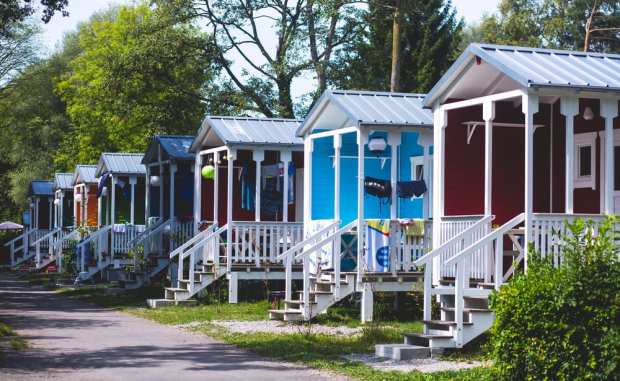In Manufactured Housing, Supplier Variety Yields B2B Payments Friction

The B2B eCommerce market has taken a path to innovation and digitization inspired by the ease and speed of B2C commerce. But the B2B market quickly discovered that platforms designed for consumers fall well short of corporates’ needs, both for buyers and vendors.
In the manufactured housing industry, consumer buying habits are actually a major pain point for buyers, which include property managers and maintenance professionals, according to Purchasing Platform CEO Dave Bowen.
A recent discussion with one property manager (PM) demonstrated the frustration of this conundrum: that PM might go through the trouble of filling out dozens of credit applications with each vendor, establish unique payment terms and structures, and manage all of those supplier contracts and product catalogues — only to have a maintenance worker drive to the store and pay retail price for products.
“A manager is no longer forced to drive to the store every day,” explained Bowen, discussing the benefits of a B2B eCommerce platform like Purchasing Platform, which is designed specifically for the manufactured housing market. “And that actually happens a lot. That loss of productivity is a real quantifiable metric.”
While traveling to a retail location to pick up necessary products may not be the most time- and cost-effective procurement strategy, it’s often the easiest way for buyers in this space to obtain what they need. The alternative is to coordinate with multiple vendors one-by-one, explained Bowen. Although that’s a pain point in any industry, the manufactured housing space — even more so than other areas of real estate — manages a uniquely vast diversity of products sold to buyers.
That’s because this industry not only involves making purchases to care for a property and land, but also the home that sits on that property. Purchases range from office supplies to anti-freeze, playgrounds to paint, and such product diversity means complex vendor diversity, too, with suppliers operating on a national or regional scale, many of which offering the same product.
Addressing Buyer Friction
To streamline this process, Bowen explained that Purchasing Platform aims to act as a “conduit,” aggregating a range of vendors and their product catalogues onto a single portal through which buyers in the industry can procure the goods they need.
The platform is also able to support the actual transaction, allowing buyers to pay for what they buy. According to Bowen, the industry’s vendor diversification makes for another unique challenge in the accounts payable department that would traditionally require these companies to not only manage payment agreements on a vendor-by-vendor basis, but make payments to those suppliers based on an individual firm’s payment preferences and needs.
Operating as a conduit allows a company to pay for all of the goods in their online cart, with funds going to Purchasing Platform. The platform then submits purchase orders to the appropriate suppliers, which are then able to invoice Purchasing Platform. This allows buyers to make payments in their preferred method — which is increasingly ACH, he noted — without worrying about acceptance needs and preferences on the individual vendor side.
Addressing Supplier Friction
In order for this strategy to work, however, Bowen noted that a buyer’s challenges aren’t the only ones that need to be addressed.
“You can’t really have a conduit without making sure that both the portfolio side and the vendor side are properly addressed,” he said.
This means being able to pay suppliers the way they need to be paid, and again, thanks to the diversity of the industry’s supplier base, this could include ACH, cards or paper checks. This business model also means that suppliers only have to invoice Purchasing Platform rather than having to invoice individual customers. That lowers the risk of late or non-payments.
For the manufactured housing industry, service providers in the procure-to-pay space must remain flexible, and that includes supporting payment methods that both buyers and suppliers want to deploy.
As B2B payments and other operations increasingly go digital, opportunities for data analytics will rise, too, which can have profound impacts on both the buyer and supplier side.
“What we see is analytics being a huge part that we really want to tap into, to provide our clients insight and intelligence that drives behavior,” noted Bowen.
For property managers, he pointed to opportunities in spend and cost analytics, as well as more sophisticated search capabilities for buyers to seek vendors based on geographic reach and other parameters.
For suppliers, he highlighted the potential for data to support seasonal procurement trends, enabling a supplier to market seasonal products in front of the customers most likely to buy.
In all cases, there is opportunity for win-win scenarios. A buyer more easily able to search for a vendor in their area means a wider opportunity for a vendor to secure a new customer. A supplier that is able to more efficiently market seasonal products will yield a buyer that more easily finds a product at the appropriate time. And as digital B2B payments and data become a more important part of the eProcurement equation in the manufactured housing industry, Bowen noted that focusing on both the buyer and supplier will be key to addressing friction.
